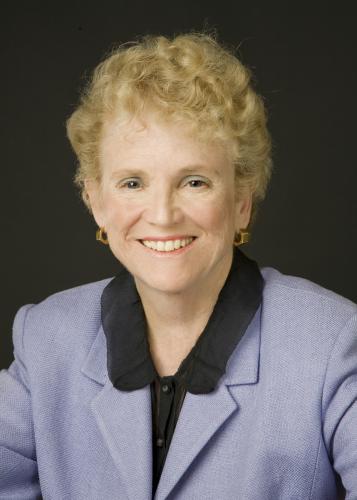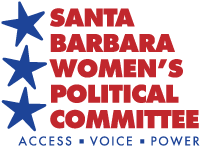The Center for American Women and Politics is proud to work with colleagues and partners throughout the country to advance women in politics and leadership. This week, footnotes is proud to host a guest blog post from Susan Rose, a former county supervisor (Santa Barbara, CA) and faculty member of CAWP's 2012 Project. In this post, Susan highlights the important work done by the Santa Barbara Women's Political Committee as it celebrates its 25th anniversary. Thank you to Susan and to the SBWPC for your work on behalf of women! Santa Barbara Women’s Political Committee: 25th Anniversary Susan Rose

The 2012 election resulted in some formidable firsts for women (PDF). Although the percentage of women in the U.S. Congress still remains low (18%), they broke several glass ceilings. Tammy Baldwin became the first openly gay person elected to the U.S. Senate; Tammy Duckworth the first disabled veteran in Congress; Tulsi Gabbard the first Hindu in Congress; and Mazie Hirono the first Asian-American woman in the Senate. However, there is still much unfinished business for the feminist agenda and an imperative need to secure the gains that have been made. To do that, more women must run for national office. How can women candidates get started in politics? Is there a pipeline and if not can one be created? In the late 1980’s, a small group of women gathered in Santa Barbara, California and asked the question: can women have a significant impact by acting locally? Reflecting on 25 years of political activism, the answer is an unqualified yes. The following narrative describes how these feminists created a pipeline using an activist model. The Santa Barbara Women’s Political Committee (SBWPC) was established in January of 1988, with a raucous reception in a popular watering hole that brought out 250 women and men. Betty Friedan was the keynote speaker that evening and anti-choice opponents picketed the event. The time was right to organize!

From the beginning, the SBWPC defined itself as a feminist organization. Their mission states: “The Santa Barbara Women’s Political Committee is dedicated to furthering gender equality and other feminist values through political and social action, and educational activities. As a political action committee, we endorse the candidacies of women and men who actively support our goals and promote a feminist agenda.” During these 25 years, the SBWPC has pursued gender equity through many avenues but with the specific focus of creating social change through public policy. The theory that female elected officials would do more to make a difference in the lives of women has since been documented by academic institutes like the Center for American Women and Politics (CAWP) at Rutgers University. Additional research from Stanford has demonstrated that female legislators perform better than their male counterparts once in office. To attain gender equity, the SBWPC aimed to achieve representational balance by electing feminist women to public office. Over these years, the organization has supported many women for school boards, city councils, boards of supervisors, the state legislature, California statewide offices, congress and the presidency. During the 1990’s, more women began to run for office in Santa Barbara. Since 1999, the county has been represented by a woman in congress. Women have comprised as much as 80% of the County Board of Supervisors, served as mayors, District Attorney, and in both houses of the state legislature. They also hold many positions on school boards and local commissions. Since 1988, the SBWPC had endorsed 95 candidates. A total of fifty-six of those were women (59%). Only four of the women lost. All candidates endorsed the feminist agenda. The success of the organization is best demonstrated by the impact these women have had on public policy and governance. Issues and legislation introduced by women elected to office in Santa Barbara have covered a broad range of topics:
- Congresswoman Lois Capps has been committed to women and families by supporting legislation on health care, the environment and education including the Affordable Health Care Act;
- State Senator Hannah-Beth Jackson has emphasized domestic violence and reproductive rights. Jackson’s legislation has assisted victims of abuse and created access to affordable reproductive care.
- District Attorney Joyce Dudley has worked to expand rape laws, eliminate rape kit backlogs and increase timely testing of all kits.
- The late County Supervisor Naomi Schwartz chaired both the local First Five Children’s Commission and the California Coastal Commission making children and the environment her hallmark issues.
- County Supervisor Janet Wolf has focused on health care and gender balance in public appointments. Wolf has worked to expand breast cancer digital mammography services for under-served women.
- As Mayor of the City of Santa Barbara, Helene Schneider has established a focus on fair pay, housing, homelessness, human services and education.
In its early days, the SBWPC founding board of directors created a set of tools that enabled them to ensure the election of feminist women to office. They include:
- Position papers;
- Recruitment of women candidates;
- Campaign skills workshops;
- Candidate assessment teams;
- Endorsements;
- State and federal PAC money; and
- Media strategies.
These tools are still in place today and guide the board in their decision-making. The question of supporting male candidates arose in the early years. On the occasions when they did not have women candidates, the SBWPC endorsed men who, in turn, supported their agenda. As a result of this policy, today the endorsement of the SBWPC is highly sought after by all candidates in Santa Barbara. Many of the first candidates to be endorsed by the PAC were founding board members. As they left the board to run for office, others took their place. The board itself became a source for candidates, creating an early pipeline. Some went on to join public boards and commissions and others became staff members to the newly elected women. As part of their current organizational structure, the SBWPC has a standing pipeline committee that focuses on recruiting women for future elections. In Santa Barbara County, women have achieved political and electoral success by grass roots organizing, marching, mentoring, advocating and campaigning. As a result of these efforts, the Santa Barbara Women’s Political Committee has created a culture where women in public office are the norm not the exception. The organizational model developed by the SBWPC has been tried and tested over the years. It can be replicated in other communities. It has worked on a local level, why not nationally?
If you or your organization would like to submit a guest blog post to footnotes, please email Kelly Dittmar at kdittmar@rci.rutgers.edu.

